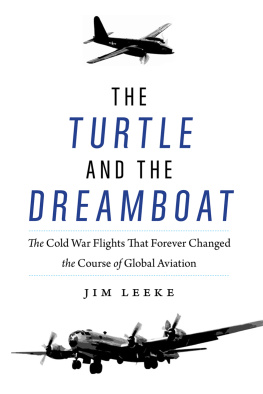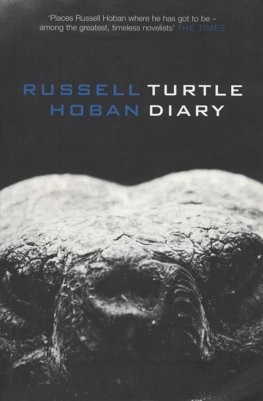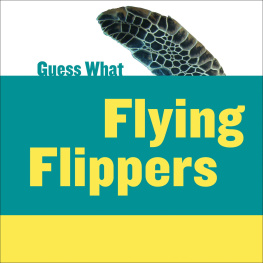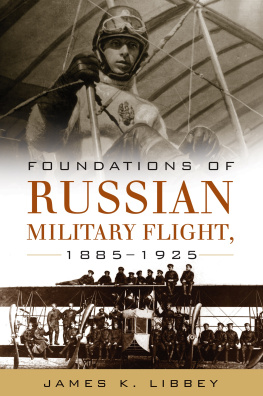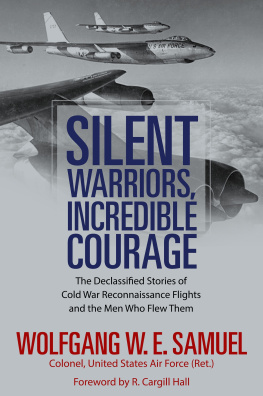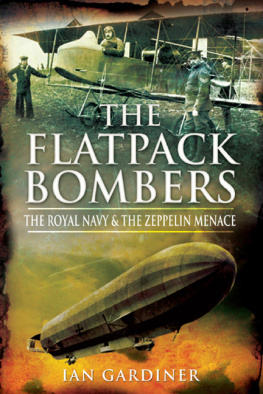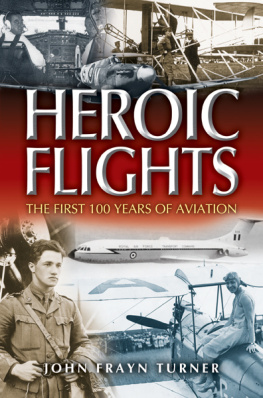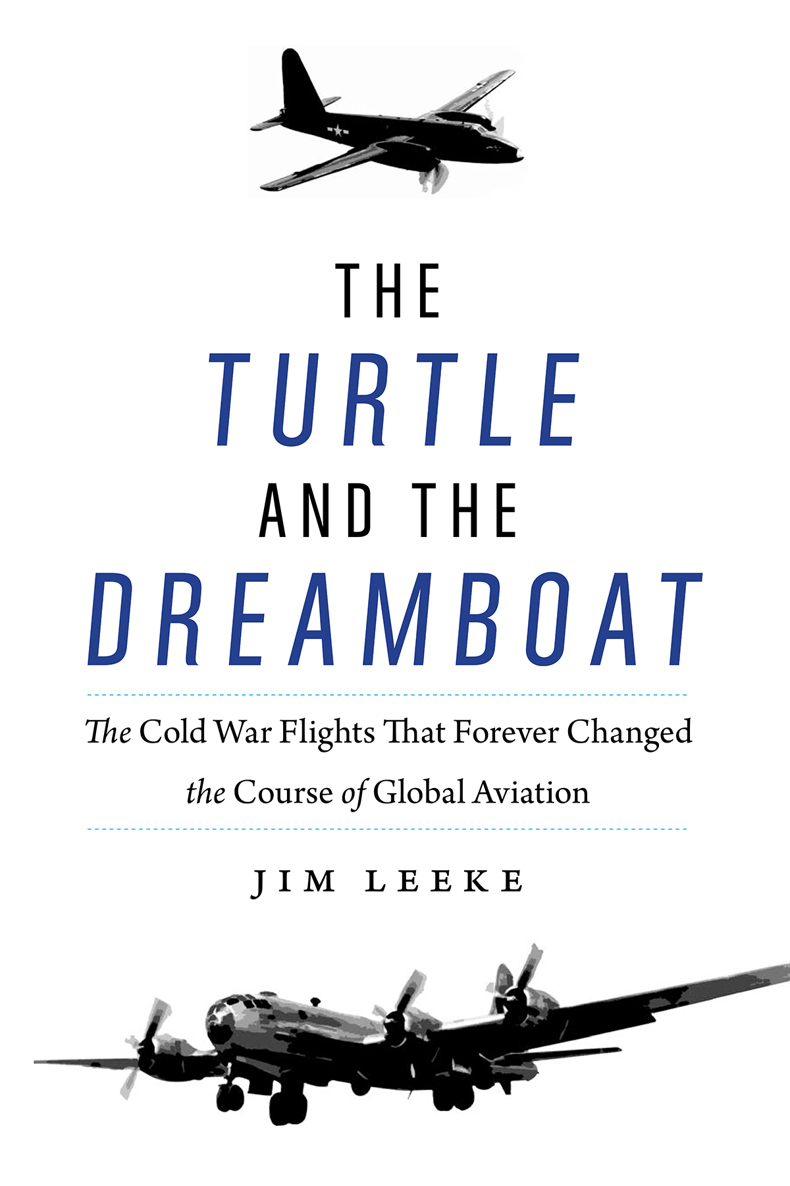
Never again will I take a transatlantic flight without thinking of the pioneering missions of the Turtle and the Dreamboatsleek, superbly engineered aircraft piloted by war heroes who shattered the barriers of global travel.
Anne R. Keene, author of The Cloudbuster Nine: The Untold Story of Ted Williams and the Baseball Team That Helped Win World War II
A very readable and effective narrative of postwar flights that were largely forgotten by historians. The Turtle and the Dreamboat should find an eager audience among aviation, military aviation, and Cold War history enthusiasts and scholars. Strongly recommended.
Ron Kaplan, executive director of the Ohio Air & Space Hall of Fame and Learning Center
Well researched and superbly written, Jim Leekes The Turtle and the Dreamboat is a fascinating account of Cold War aviation. These two aircraft set the stage for long-distance global flight. A must-read.
Mitchell Yockelson, author of The Paratrooper Generals: Matthew Ridgway, Maxwell Taylor, and the American Airborne from D-Day through Normandy
The Turtle and the Dreamboat crews were true pioneers. Jim Leeke presents the tale of how their two aircraft paved the way for the thousands of planes flying around the world today and helps us to appreciate how we got here.
Maj. Gen. Edward J. Mechenbier, U.S. Air Force (Ret.)
The Turtle and the Dreamboat
The Cold War Flights That Forever Changed the Course of Global Aviation
Jim Leeke
Potomac Books
An imprint of the University of Nebraska Press
2022 by Jim Leeke
Cover designed by University of Nebraska Press; cover images are from the interior.
Author photo courtesy of George C. Anderson.
All rights reserved. Potomac Books is an imprint of the University of Nebraska Press.
Library of Congress Control Number: 2021050540
The publisher does not have any control over and does not assume any responsibility for author or third-party websites or their content.
For the airdales and the spooks
The record-shattering flights of two United States aircraftthe Truculent Turtle and the Pacusan Dreamboatserve again to illustrate this shrinking world from the potential commercial ormore frighteningmilitary viewpoints.
Cairns Post, Australia
Contents
The Great Circle
Waves of bombers filled Tokyos nighttime skies like bats from a cave until two gleaming B -29s dropped new super weapons to end the war. As autumn approached, Americans in their capital heard the homecoming roar. Three of the bombers reached National Airport in mid-September 1945 with a general piloting each plane.
The airmen had set out to fly from Mizutani Airport on the Japanese island of Hokkaido nonstop to Washington DC , the first such flight ever attempted. Strong headwinds over Canada forced them instead to refuel at Chicago. The nearly six thousand miles theyd flown from the Far East to the Midwest nonetheless were an American, if not a world, nonstop record. Gen. Henry H. Hap Arnold, the five-star chief of the U.S. Army Air Forces ( USAAF , commonly shortened to AAF ), told journalists later in Washington that heavy bombers were so badly needed in the Pacific during the war that the four-engine Boeing B -29 Superfortress had gone straight from the drawing board into production. The long flight home, he said, was a service test the B -29 had never undergone.
Lt. Gen. Barney M. Giles commanded the mission. But this was not a stunt and we werent taking chances, he said. The planes are too expensive.... Well do it again. Maj. Gen. Curtis Old Iron Pants LeMay, another of the arriving pilots, added that B -29 bombing raids had finished Japan. The war would have been over in two weeks, he said, without the Russians coming in and without the atomic bomb.
A second trio of B -29s flew into Washington a month later from the Pacific island of Guam. The previous summer Superforts had lifted off from Guam and nearby Tinian and Saipan to drop tons of incendiary and high-explosive bombs on Japan. Washington Star correspondent W. H. Shippen Jr. described these raids as the worlds longest bombing run, all of 3,300 miles and more from here to Tokyo and back. The three Superforts had forty AAF servicemen on board, each eligible for an honorable discharge.
Another flight of four B -29s reached the capital the first day of November. These planes flew sixty-five hundred miles nonstop from Hokkaido in twenty-seven and a half hours. All had flown missions against Japan during the war and had dropped supplies to starving American prisoners afterward. Coming home, they battled horrible weather and an eleven-hundred-foot ceiling over the Pacific. We didnt know whether we would make it until we reached Kodiak, Alaska, said the general who led the flight. His pilots abandoned hopes of continuing past Washington to Puerto Rico only because of low fuel. I wanted to prove a bomber could reach Washington from Japan and fly beyond it, said a disappointed colonel.
The War Department made no official announcement, but the B -29 hops to Washington in flights of three and four were now over. The next bomber would come alone, like a steely eyed marshal in a western movie.
The single Superfortress was unpainted like all the others. Combat commanders recommended taking off the paint because fighters will become fifteen to twenty pounds lighter, and heavy bombers will lose seventy to eighty pounds, the New York Times explained during the war. American fliers soon had applied the name to every B -29.
Col. Clarence S. Irvine of St. Paul, Nebraska, commanded this particular plane, which had flown about a dozen combat missions during the war. He later said it was called Dreamboat because we were working on 44,000 pound bombloads when the war ended. Universally known in the AAF as Bill, Colonel Irvine had entered the army as a private during the last days of the First World War and amassed a stellar record during the twenty-seven years since. He chewed rather than smoked a dozen to fourteen cigars a day. During long flights, he explained, smoking is out of the question because high test gasoline is being transferred to the flight tanks.
Irvine physically resembled the little-known character actor Paul Ford, who a decade later would star in the new medium of television playing bumbling Colonel Hall on The Phil Silvers Show. The likeness went no further. Not even M.Sgt. Ernest Bilko would have dared to launch a scheme around this colonel, although Irvine himself had shredded miles of red tape and violated plenty of rules in supporting General LeMays ferocious bombing campaign in the Pacific. With his chesty physique and crushed service cap, Irvine seemed more like a character from Milton Caniffs wartime Terry and the Pirates comic strip. Enlisted personnel who served under him later dubbed the Nebraskan Turbine Irvine for his energetic, hard-charging ways.
The colonel began mulling a Guam-to-Washington flight in July 1945 while still fighting the Japanese. Irvine asked permission to make the attempt once the enemy surrendered, but the army stalled, because a good many technical men said it couldnt be done, he later wrote. On paper, by old-fashioned methods, it couldnt. Irvines idea was to strip a B -29 of all nonessential gear for his proposed flight. We wanted to demonstrate, in convincing fashion, that the B -29 still had plenty of room for exploitation of its powerseven when the dope sheets showed the flight couldnt succeed.
Next page
